Potřebujeme váš souhlas k využití jednotlivých dat, aby se vám mimo jiné mohly ukazovat informace týkající se vašich zájmů. Souhlas udělíte kliknutím na tlačítko „OK“.
ASTM E499/E499M-11
Standard Practice for Leaks Using the Mass Spectrometer Leak Detector in the Detector Probe Mode
Automaticky přeložený název:
Standardní praxe těsnost hmotnostního spektrometru netěsností v detektoru režimu Probe
NORMA vydána dne 1.7.2011
Informace o normě:
Označení normy: ASTM E499/E499M-11
Poznámka: NEPLATNÁ
Datum vydání normy: 1.7.2011
Kód zboží: NS-46993
Počet stran: 6
Přibližná hmotnost: 18 g (0.04 liber)
Země: Americká technická norma
Kategorie: Technické normy ASTM
Kategorie - podobné normy:
Anotace textu normy ASTM E499/E499M-11 :
Keywords:
bell jar leak test, bomb mass spectrometer leak test, helium leak test, helium leak testing, leak testing, mass spectrometer leak testing, sealed object mass spectrometer leak test, Leak testing--mass spectrometer leak detector (MSLD), Mass spectrometer leak detector (MSLD), Probe methods, Sealed object mass spectrometer leak test, Bell jar leak test, Bomb mass spectrometer leak test, Detectors, Helium leak testing, ICS Number Code 71.060.01 (Inorganic chemicals in general)
Doplňující informace
| Significance and Use | ||||
|
Test Method A is frequently used to test large systems and complex piping installations that can be filled with a trace gas. Helium is normally used. The test method is used to locate leaks but cannot be used to quantify except for approximation. Care must be taken to provide sufficient ventilation to prevent increasing the helium background at the test site. Results are limited by the helium background and the percentage of the leaking trace gas captured by the probe. Test Method B is used to increase the concentration of trace gas coming through the leak by capturing it within an enclosure until the signal above the helium background can be detected. By introducing a calibrated leak into the same volume for a recorded time interval, leak rates can be measured. |
||||
| 1. Scope | ||||
|
1.1 This practice covers procedures for testing and locating the sources of gas leaking at the rate of 1 × 10−7 Pa m3/s (1 × 10−8 Std cm3/s) or greater. The test may be conducted on any device or component across which a pressure differential of helium or other suitable tracer gas may be created, and on which the effluent side of the leak to be tested is accessible for probing with the mass spectrometer sampling probe. 1.2 Two test methods are described: 1.2.1 Test Method A—Direct probing, and 1.2.2 Test Method B—Accumulation. 1.3 Units—The values stated in either SI or std-cc/sec units are to be regarded separately as standard. The values stated in each system may not be exact equivalents: therefore, each system shall be used independently of the other. Combining values from the two systems may result in non-conformance with the standard. 1.4 This standard does not purport to address all of the safety concerns, if any, associated with its use. It is the responsibility of the user of this standard to establish appropriate safety and health practices and determine the applicability of regulatory limitations prior to use. |
||||
| 2. Referenced Documents | ||||
|
Podobné normy:
Historická
1.8.2013
Historická
1.6.2012
Historická
1.10.2012
Historická
1.4.2013
Historická
1.6.2009
Historická
1.8.2011
Odebírejte informace o nově vydaných normách ZDARMA:
Chcete pravidelně odebírat informace o nově vycházejících normách z celého světa a to zcela zdarma?
Přihlašte se k odběru. Vše je velice jednoduché a absolutně ZDARMA.
Na výběr máte vydavatele z celého světa.


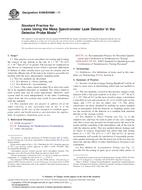
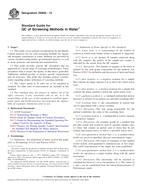 ASTM D6850-13
ASTM D6850-13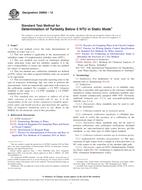 ASTM D6855-12
ASTM D6855-12 ASTM D6874-12
ASTM D6874-12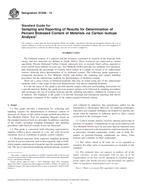 ASTM D7026-13
ASTM D7026-13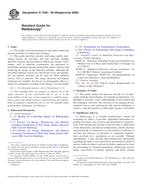 ASTM E1000-98(2009)..
ASTM E1000-98(2009)..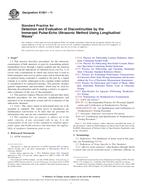 ASTM E1001-11
ASTM E1001-11
 Cookies
Cookies
